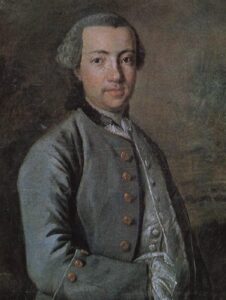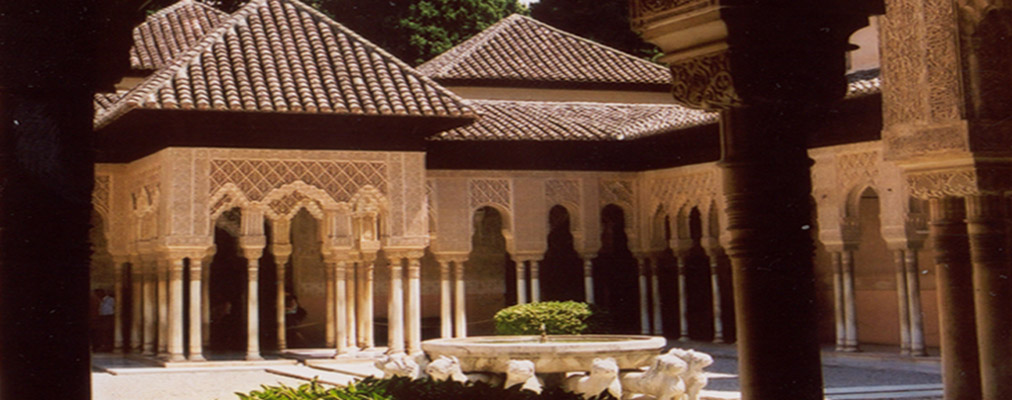Natural sciences and biblical exegesis form a differentiated hermeneutical weave in early modern Europe (circa 1500–1800). Disciplines like zoology or botany go far back in history and have their own tradition. However, already in the Middle Ages and the Renaissance they have became intertwined with Biblical exegesis and were used as auxiliary tools for a better understanding of Scripture.
The specific task of natural sciences was the interpretation of those parts of Scripture which mention unknwon animals, plants, things and also mythical creatures, which were in need of a deeper (‚scientific‘) explanation. This was not, as the project wants to show, to deconstruct the Scripture as a sacred text but to understand the Bible even better. The aim was to actualize, confirm, revise or qualify the incidents, narratives and natural beings which occur in Scripture within the tradition and the validity scales of contemporary biblical exegesis.
In accordance with the historical and literal sense of Scripture scholars all over Europe tried to understand the study of the Bible as a Realienkunde and to determine the historical world ‚behind‘ Scripture. Therefore they were concerned with problems arising from the translation of the original Hebrew text. An essential part of this was the comparison of Hebrew and Arabic terms with the Greek, Latin and vernacular languages in order to get a deeper understanding of particular animals or plants and to revise and adjust existing Bible translations and commentaries. For this purpose the idea of Arabic to be a pure and very stable language – as it has emerged already in the centuries before – was still recognized by scholars of oriental languages and biblical studies. This led to the gradual formation of oriental studies within the European academic structures and caused a long-lasting interest in the culture ‚behind‘ the Bible.

Peter Forsskål (1732-1763), Swedish explorer, orientalist and naturalist, disciple of Carl Linnaeus.
Orientalists (like Johann David Michaelis or Carl Aurivillius) and natural scientists (like Carl v. Linné and his disciples) formed a ‚field of research‘ and were connected by academic exchanges of their findings and traveling disciples. Journeys were organized to look for natural phenomena in those parts of the Arabian world where the original natural and cultural historical setting of the Bible – such was the idea – could still be experienced. One example of such a journey is the well-known Danish expedition (1761�1767), financed by the Danish crown and organized by several European scholars. A group of travellers, scientists and philologists was sent out to investigate Arabia felix, modern Yemen in the south of the Sinai peninsula.
Our project will focus on the following aspects: translations and commentaries of Scripture, traveling accounts, academic disputations, zoological and botanical treatises concerning the oriental world, philological studies of Scripture and their entanglment with particular academic milieus and/or constellations. Leading research questions will be the following: How can the hermeneutical instruments of these oriental scholars be described? What were their particular cognitive interests and how did they transform Scripture and its readings within the European academic world? In which ways have they dealt with exegetical and scientific knowledge in, from and about Scripture? How were natural sciences and biblical exegesis combined in the texts? To what extent did findings of early modern natural sciences make an impact on the exegesis of the Bible? How did this influence the image and representation of the Biblical world (not to say: the orient) itself?
Responsible for this project are Professor Bernd Roling (Berlin), Professor Outi Merisalo (Jyväskylä) and Bejamin Hübbe, M.A. (Berlin)
Texts (short selection)
- Carl Aurivillius, Dissertationes ad Sacras Literas et Orientalem Philologiam pertinentes, ed. Friderich Andreas Rosenbusch/Johann Benjamin Fleischer, G�ttingen/Leipzig 1790.
- Samuel Bochart, Hierozoicon, sive bipertitum opus de Animalibus Sacrae Scripturae, ed. Thomas Roycroft, London 1663.
- Olavus Celsius d. Ä., Hierobotanicon, sive, De plantis sacrae Scripturae dissertationes breves, Uppsala, 1745�1747.
- Peter Forsskål, Descriptiones animalium avium, amphibiorum, piscium, insectorum, vermium, ed. Carsten Niebuhr/Nicolaus M�ller, Hafniae 1775.
- Peter Forsskål, Flora Aegyptiaco-Arabica, sive Descriptiones plantarum, ed. Carsten Niebuhr a. Nicolaus M�ller, Hafniae 1775.
- Pehr Kalm – Eric Gyllensten (resp.), Dissertatio de usu, quem praestat Zoologia in Hermeneutica sacra, Turku 1769.
- Carl v. Linn�, Amoenitates Academicae, seu, Dissertationes variae physicae, medicae, botanicae antehac seorsim editae nunc collectae et auctae, 10 Bde., 1749�1790.
- Carl v. Linné, Philosophia botanica in qua explicantur fundamenta botanica cum definitionibus partium, exemplis terminorum, observationibus rariorum, Stockholm 1751 [Godofred Kiesewetter].
- Carl v. Linné, Systema naturae per regna tria naturae, secundum classes, ordines, genera, species, 4 Bde., Stockholm 1766 [Laurentius Salvius].
- Johann David Michaelis, Fragen an eine Gesellschaft gelehrter M�nner, die auf Befehl Ihro Majest�t des K�nigs von D�nemark nach Arabien reisen, ed. Johann Gottlieb Garbe, Frankfurt a. Main 1762.
- Carsten Niebuhr, Beschreibung von Arabien, aus eigenen Beobachtungen und im Land selbst gesammleten Nachrichten, ed. Nicolaus M�ller, Koppenhagen 1772.
- Carsten Niebuhr., Reisebeschreibung nach Arabien und andern umliegenden L�ndern, 2 Bde., ed. Nicolaus M�ller, Koppenhagen 1774�1778.
- Johann Jacob Scheuchzer, Physica Sacra, 4 Bde., Augsburg/Ulm 1731–1735.
Further Reading
- Christoph Bultmann/Lutz Danneberg (eds.), Hebraistik – Hermeneutik – Homiletik. Die ‚Philologia Sacra‘ im frühneuzeitlichem Bibelstudium, Berlin 2011.
- David Goldberg, Peter Forsskal, ‘Goettingen prodigy and author of one of the least known jewels of Enlightenment literature’ [the paper was delivered at the meeting of The Academy of Sciences at Göttingen on 13th December 2013; free access to pdf-document]
- Klaus Karttunen, Mooseksen kirjoista kungfutselaisuuden klassikoihin ja Jerusalemista Siperian tundralle. Aasian-tutkimuksen vaiheet Suomessa, Helsinki 2011.
- Bernd Roling, Physica sacra. Wunder, Naturwissenschaft und historischer Schriftsinn zwischen Mittelalter und Fr�her Neuzeit, Leiden u.a. 2013.
- Bernd Roling, ‘Impartiality in the Matrix of taxonomy: Carl von Linné and Folklore’, in, Kathryn Murphy/Anita Traninger (ed.), The Emergence of Impartiality, Leiden/Boston 2014, 379�407.
- Bernd Roling, ‘Der Schamane und das Orakel von Delphi. Prophetie und Prophetiemodelle im frühneuzeitlichen Skandinavien’, in, Christel Meier/Martina Wagner-Egelhaaf (ed.): Prophetie und Autorschaft. Charisma, Heilsversprechen und Gefährdung, Berlin 2014, 277�303.
- Zur Shalev, Sacred Words and Worlds. Geography, Religion and Scholarship, 1500–1700, Leiden u.a. 2012.
Links
- A list and short description of the dissertations advised by Carl v. Linné made by the Hunt Institute for Botanical Documentation
- The official website of Project Forsskal which focuses on the persona and writings of the scandinavian scientist and partipiciant of the Danish Expedition Peter Forsskål
- A multi-institutional repository maintained by National Library of Finland
